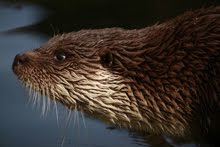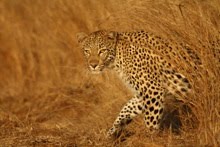Like most birders, I only tend to think about cleaning my dirty binoculars when I am out in the field. The challenge, of course, is then 'how does one clean a binocular or telescope lens in the field with out scratching that seriously expensive glass?'
Using your T-shirt is certainly the most commonly used method but probably not the best of ideas. I would be a telling a filthy lie if I said I had never used a dirty, sweaty T-shirt to clean off my fancy-shmancy Swaros. But I have learnt my lesson. At some stage I realised that it really was not a train-smash if I was caught out in the field without one of those cute little optics manufacturer-designed cleaning kits. mmm, is it bad luck to talk about rail accidents when one is travelling on a train? Hope not.
Nowadays, if I really have to clean my binocular or telescope lenses out in the field then I tend to rely on one of two methods:
1. blow off as much stuff as possible; pour water over the lens to wash off most of the grime; and then use my finger to gently wash the lens; finish by blowing off excess water and then using a MICROFIBRE cloth to give a final clean
2. Blow off; Lick (yes, lick it with your tongue - it is extremely effective!); MICROFIBRE
Not having a microfibre is not the end of the world, either. Just use the first method and try to blow off as much of the water as possible (this will help reduce the water-spots on the lens). This will normally suffice until I can get home to a microfibre cloth or borrow one from a fellow birder.
Birders spend a lot of hard-earned money to have beautiful equipment and I don't think it is that hard to keep them in good nic.
Happy birding
Dale
Using your T-shirt is certainly the most commonly used method but probably not the best of ideas. I would be a telling a filthy lie if I said I had never used a dirty, sweaty T-shirt to clean off my fancy-shmancy Swaros. But I have learnt my lesson. At some stage I realised that it really was not a train-smash if I was caught out in the field without one of those cute little optics manufacturer-designed cleaning kits. mmm, is it bad luck to talk about rail accidents when one is travelling on a train? Hope not.
Nowadays, if I really have to clean my binocular or telescope lenses out in the field then I tend to rely on one of two methods:
1. blow off as much stuff as possible; pour water over the lens to wash off most of the grime; and then use my finger to gently wash the lens; finish by blowing off excess water and then using a MICROFIBRE cloth to give a final clean
2. Blow off; Lick (yes, lick it with your tongue - it is extremely effective!); MICROFIBRE
Not having a microfibre is not the end of the world, either. Just use the first method and try to blow off as much of the water as possible (this will help reduce the water-spots on the lens). This will normally suffice until I can get home to a microfibre cloth or borrow one from a fellow birder.
Birders spend a lot of hard-earned money to have beautiful equipment and I don't think it is that hard to keep them in good nic.
Happy birding
Dale










.jpg)








.jpg)



4 comments:
Dale,
I've used the licking method before and it's fairly successful. Recently I've picked up a lens pen at a local photo store, it travels well and is great for large and small cleaning jobs.
Keep up the good work.
~K
Hi K,
I had a lens pen years ago and really liked it - it had a little brush at one end for the larger stuff, and a "lens eraser" at the other. and it traveled with me for years but I lost track of it a good while ago. the advantage of the lick wipe method for me is that I have a bunch of microfibers about and so I am way more likely to just happen to have one in my binoculars case, field trousers, or backpack when I am out in the field.
Oh, and K, do you write I blog?
happy birding
dale
Dale,
I'm "blogless", though I do waste a good bit of time digiscoping. If you're on flickr you can find my stuff under the username "kmichaelshea".
I was curious what camera setup you use for digiscoping with your swaro? Since August I've started digiscoping and use a setup that many Portuguese digiscopers use (Faisca, Caldas, Moreira). It's a Zeiss scope with their DSLR adapter and a Canon 400D controlled by a remote switch.
There is no zoom/autofocus, it's fixed at f12, but the results are good and it's really fun to use.
Keep up the good work.
~K
Hi Kevin,
you have some lovely pics on your flickr page - I will definitely spend some more time exploring it.
About my digiscoping setup: essentially I love taking photos and I love looking at birds so I tend to sacrifice some of the performance of a DSLR for the convenience of a little camera that I can slip in to my pocket.
I was using a little samsung with a remote on a Swaro DCB (that is the little swing arm bracket thing that let me keep the camera out of the way while I was using the scope, and then quickly swing it back in to place to take photos). I recently bought a little Cannon A590 (on Clay Taylor's recommendation) and am using it with swaros DCA (a little barrel contraption that fits over the zoom lens). I am very happy with the new camera but still getting used to the new adapter. at any rate I got a couple of nice photos of a Black Woodpecker in Hungary last Saturday, and a couple of passable videos of Imperial Eagle and White-tailed Eagle on Sunday.
The auto-focus on the little canon is quite good but I tend to tweek it a wee bit before taking the shot - it seems to be working well for me.
happy birding (and keep in touch)
Dale
Post a Comment